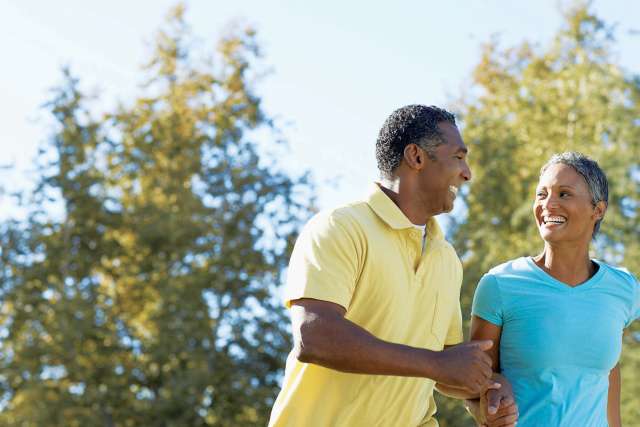Dear Doctors: My husband has prediabetes. I read that going for a walk after you eat can help your blood sugar, so I always do that. But my husband says when you sit down again, your blood sugar goes right back up, so what’s the point? Is that true? I’m not giving up on him joining me.
Dear Reader: Prediabetes is a condition where blood sugar levels are higher than normal, but not yet high enough to meet the threshold for diabetes. However, prediabetes is considered a warning sign of an increased risk of developing Type 2 diabetes.
Type 2 diabetes is when the body can’t use insulin effectively to control blood sugar levels. Sometimes, the body can also no longer produce the required amounts of the hormone. Over time, the chronic high blood sugar of Type 2 diabetes can cause tissue, nerve and organ damage. More serious complications include cardiovascular disease, stroke, kidney issues and blindness. All of this means it’s important to take the prediabetes warning seriously.
Now let’s talk about the post-meal walks that you have added to your routine. Several years ago, a group of researchers in Ireland found that taking a walk after a meal has a beneficial effect on blood sugar. This proved true even when the walk was only five minutes long and taken an hour after eating. Some people in the study had diabetes, and some did not. The beneficial effects on blood sugar occurred in all of the participants, regardless of their diabetes status. Although simply standing after a meal also improved blood sugar numbers, the results were far more modest.
The reason a post-meal walk is good for blood sugar control lies in the muscles. Even the slight contractions, like standing up, help use up glucose available after a meal. When you walk, you are using some of the largest muscles in the body. Those are the gluteus maximus, the hamstrings and the quadriceps. The latissimus dorsi, fan-shaped muscles in the mid-back that help support trunk and arm movement, are also working. When activated, these muscle groups use glucose, which helps prevent the spikes associated with diabetes.
Managing those blood sugar spikes is an important factor in lowering cardiovascular risk. Among people who walked, the post-meal spike was not only less extreme, but the spike was also more gradual. There is also evidence that repeated blood sugar spikes play a role in the development of Type 2 diabetes.
Your husband is correct that blood sugar will rise again after the walk. However, the change will be gradual and less extreme than without the added exercise. Walking smooths out those dangerous spikes and lessens the risk of the health consequences we just discussed. Your husband is fortunate that his blood sugar issues were noticed at the prediabetes stage. With proper diet and exercise, he still has time to prevent an escalation to Type 2.
(Send your questions to [email protected], or write: Ask the Doctors, c/o UCLA Health Sciences Media Relations, 10960 Wilshire Blvd., Suite 1955, Los Angeles, CA, 90024. Owing to the volume of mail, personal replies cannot be provided.)




